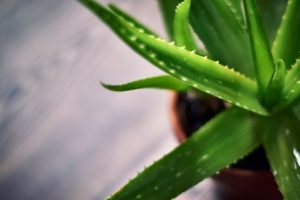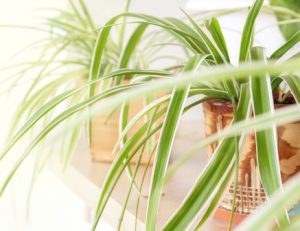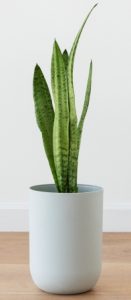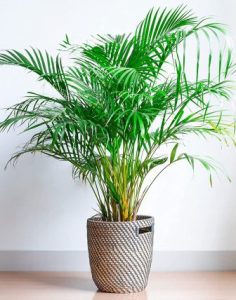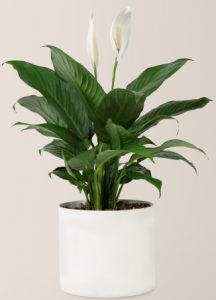According to a WHO report, 4.3 million people worldwide lose their lives due to inhaling contaminated air in their homes.
From causing various respiratory and other ailments to causing great damage to mother nature, the rising level of air pollution has paved the need for combating it like never before.
However, green plants can do wonders when it comes to improving the air quality of your house. Not only do they look beautiful, they are also a cost-effective alternative to expensive air purifiers. According to NASA, some plants absorb harmful pollutants and purify your indoor air.
So In this article, we will tell you about 5 plants that are cost-effective and natural alternatives to air purifiers.
Here come 5 green buddies to your rescue!
6 Air Purifying Indoor Plants To Combat Air Pollution
1. A Dash Of Aloe Magic
Aloe vera is one of the most common indoor plants found in many households. Aloe vera is a gift of nature for humankind, and its benefits don’t seem to end!
Perhaps you already have this plant at home, or maybe you have been following your grandma’s secret recipe of aloe vera for beauty and health.
But what if we tell you it is a natural air purifier too? Now you have all the reasons to decorate it on your balcony or living room!
- Removes toxins such as formaldehyde and benzene.
- Advantages: Supplies enough oxygen to the air and absorbs harmful toxins. It’s a low-maintenance plant that can survive with minimal watering.
- Best place to keep: Your aloe plant will thrive in sunlight or a well-lit room. However, make sure not to excessively water it.
2. Spider Plant On My Wall
A spider plant is something you should welcome in your home. Please don’t get confused by its creepy-crawly name. NASA’s study showed that spider plants were capable of removing 95% of harmful chemicals from the air in a day.
Spider plants, also known as ‘Chlorophytum,’ make great air purifiers. According to NASA, spider plants are one of the most potent plants that effectively remove toxins from the air. They have long and gorgeous leaves, and when their offshoot grows, they resemble a spider web.
- Removes toxins such as formaldehyde, benzene.
- Advantages: Spider plants have the quickest growth and don’t require direct sunlight. Unlike other plants, caring for them is pretty simple. They are also considered safe for pets.
- Disadvantages: Can trigger pollen allergies.
- Best place to keep: Bedroom/living room or even your office table.
3. Snake Plants Don’t Hiss
Snake plant is also known as mother-in-law’s tongue (okay, now stop giggling!) due to its unique sword-shaped leaves.
Its green and yellow hues make it a perfect home decor. Snake plants release a good amount of oxygen at night. Keeping them at your home can help you obtain direct oxygen.
- Removes toxins such as trichloroethylene, xylene, benzene, formaldehyde and, etc.
- Advantages: Pleasing to the eye, is a low maintenance plant, requires little care and attention to grow.
- Disadvantages: Can be mildly toxic to small children if consumed.
- Best place to keep: Bedroom or darker corners of the house are the ideal places to keep snake plants.
Snakes plant also thrives in indirect sunlight and also some amount of direct sunlight.
4. Bamboo Palm Protects From Harm
Also called reed palm, one of the best plants to effectively filter out indoor air toxins. It has long and slender leaves and can grow 3-5 feet tall.
- Removes toxins such as dust particles, xylene, benzene, formaldehyde, trichloroethylene, etc.
- Advantages: Very low maintenance and low requirement plant. It does not require water regularly.
- Disadvantages: Vulnerable to insect (bugs, spider mites, etc.) attacks.
- Best place to keep: It is ideal for decorating living rooms and bedrooms.
5. Money Plant Matters
According to a popular myth, money plant can bring you wealth and prosperity. While we can’t tell you how true it is, we can certainly tell you how beneficial it can be for your health! It works as a great air purifier as it has a high purification rate compared to other NASA approved plants.
- Removes toxins such as dust particles, benzene, formaldehyde, trichloroethylene, xylene, and toluene.
- Advantages: low maintenance plant, can survive most extreme situations.
- Disadvantages: toxic to cats, dogs, and small children.
- Best place to keep: money plants thrive in direct sunlight, so they should be placed at your windowpane or in corners of your house that receive adequate sunlight.
6. Give Me Some Peace, Lily!
The peace lily is a flowering plant that emits a beautiful scent when it blooms. Its delicate white flowers make it a perfect option for home decor. Peace lily is very effective in filtering pollutants from the air.
- Removes toxins such as formaldehyde, benzene, trichloroethylene, ammonia, xylene, and several other allergens.
- Advantages: It has very low maintenance and requirements. It thrives in little water and sunlight.
- Disadvantages: Can be mildly toxic to pets and small children if consumed. Hence, it is crucial to practice caution.
- Best place to keep: money plants should be placed in bright and well-lit areas. They shouldn’t be kept in direct sunlight.
Warning: If you have pets at home, you need to do your research well to find out which plants they might be allergic to!
FAQs
How many plants are required to purify the indoor air?
There isn’t an exact number. However, NASA
recommends a “minimum of one plant for every 100 square feet of indoor space.”
To what extent NASA approved plants purify the air?
According to NASA, “the amount of leaf surface area influences the rate of air purification.” Hence, the bigger and b the plant, the better.
You May Also Like To Read:
How To Treat Yourself With Ayurvedic Plants?
Conclusion
Air pollution is a global problem that seems to persist. You will not be able to combat it on your own. However, you can always make your home a green place.
So adorn your home with these beautiful plants. Not only will they add a touch of aesthetics to your interior and uplift your mood, but they will also purify your indoor air. Isn’t it a “win-win situation”?
We hope this article helped you in knowing the amazing benefits of green plants for your home. If you have any other questions, please type them in the comments section below. Stay healthy and breathe easy!


